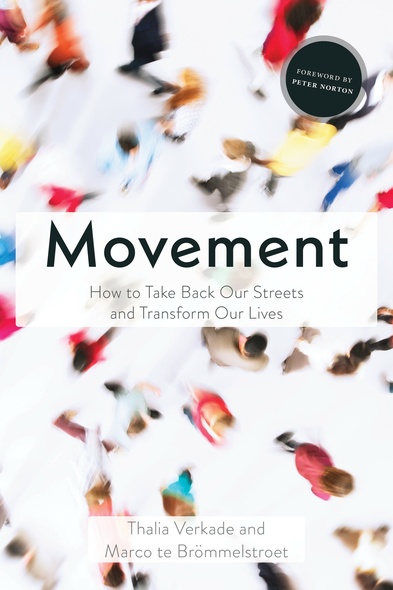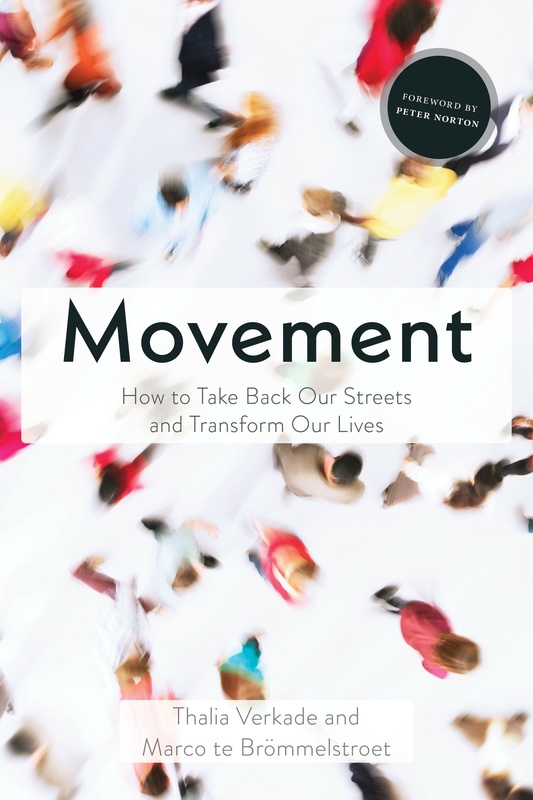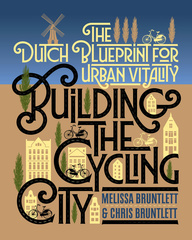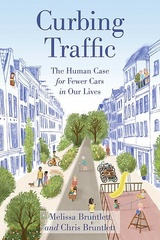Movement
How to Take Back Our Streets and Transform Our Lives
Island Press
“This book will—no question—make you think in new ways. Why have we surrendered our cities to cars? What might it be like to inhabit a space designed for people instead? It’s exciting and hopeful—this we can do!”
—Bill McKibben, author of The Flag, The Cross, and the Station Wagon
Almost everywhere in the world, streets are designed for travel at the highest speed, giving precedence to the chunkiest vehicles. We take for granted that the streets outside of our homes are designed only for movement from one point to another. But what happens if we radically rethink how we use these public spaces? Could we change our lives for the better?
In Movement: How to Take Back Our Streets and Transform Our Lives, journalist Thalia Verkade and mobility expert (“the cycling professor”) Marco te Brömmelstroet take a three-year shared journey of discovery into the possibilities of our streets. They investigate and question the choices and mechanisms underpinning how these public spaces are designed and look at how they could be different. Verkade and te Brömmelstroet draw inspiration from the Netherlands and look at what other countries are doing, and could do, to diversify how they use their streets and make them safer.
During the pandemic, decision-makers in cities around the world were confronted with the questions of who our streets belong to, how we want to use them, and who gets to decide. Making our communities safer, cleaner, and greener starts with asking these fundamental questions. To truly transform mobility, we need to look far beyond the technical aspects and put people at the center of urban design. Movement will change the way that you view our streets.
—Bill McKibben, author of The Flag, The Cross, and the Station Wagon
Almost everywhere in the world, streets are designed for travel at the highest speed, giving precedence to the chunkiest vehicles. We take for granted that the streets outside of our homes are designed only for movement from one point to another. But what happens if we radically rethink how we use these public spaces? Could we change our lives for the better?
In Movement: How to Take Back Our Streets and Transform Our Lives, journalist Thalia Verkade and mobility expert (“the cycling professor”) Marco te Brömmelstroet take a three-year shared journey of discovery into the possibilities of our streets. They investigate and question the choices and mechanisms underpinning how these public spaces are designed and look at how they could be different. Verkade and te Brömmelstroet draw inspiration from the Netherlands and look at what other countries are doing, and could do, to diversify how they use their streets and make them safer.
During the pandemic, decision-makers in cities around the world were confronted with the questions of who our streets belong to, how we want to use them, and who gets to decide. Making our communities safer, cleaner, and greener starts with asking these fundamental questions. To truly transform mobility, we need to look far beyond the technical aspects and put people at the center of urban design. Movement will change the way that you view our streets.
Thalia Verkade is a writer and journalist from Rotterdam, the Netherlands. She has worked as Moscow correspondent for the Dutch daily newspaper NRC and has been writing about technology, mobility language, and culture for Dutch online platform De Correspondent.
Marco te Brömmelstroet is the chair of Urban Mobility Futures at the Amsterdam Institute for Social Science Research at the University of Amsterdam. His teaching centers on the relationship between land use developments and mobility behavior. As founding academic director of the Urban Cycling Institute he strengthens the links between academia and how cycling relates to the urban and social environment. Cycling offers him a lens to radically reimagine the way in which society thinks about mobility, transport systems, and the street.
Marco te Brömmelstroet is the chair of Urban Mobility Futures at the Amsterdam Institute for Social Science Research at the University of Amsterdam. His teaching centers on the relationship between land use developments and mobility behavior. As founding academic director of the Urban Cycling Institute he strengthens the links between academia and how cycling relates to the urban and social environment. Cycling offers him a lens to radically reimagine the way in which society thinks about mobility, transport systems, and the street.
Contents
Foreword \ Peter Norton
Prologue
Part I: The Streets Belong to All of Us
-Why has traffic taken over our public space?
Part II: Caution — Children at Play
-How have cars changed the environment we live in?
Part III: The Story That’s Never Told
-Who are the victims of this system?
Part IV: On Automatic Pilot
-Where will we end up if we carry on this way?
Part V: Public Space as if People Mattered
-What happens if you try to do things differently?
Epilogue: What’s the Next Step?
-Some ideas for action
Acknowledgements
Endnotes
Glossary
Index
Foreword \ Peter Norton
Prologue
Part I: The Streets Belong to All of Us
-Why has traffic taken over our public space?
Part II: Caution — Children at Play
-How have cars changed the environment we live in?
Part III: The Story That’s Never Told
-Who are the victims of this system?
Part IV: On Automatic Pilot
-Where will we end up if we carry on this way?
Part V: Public Space as if People Mattered
-What happens if you try to do things differently?
Epilogue: What’s the Next Step?
-Some ideas for action
Acknowledgements
Endnotes
Glossary
Index







